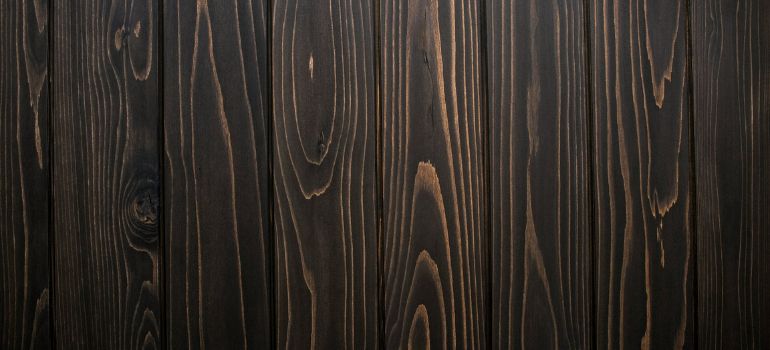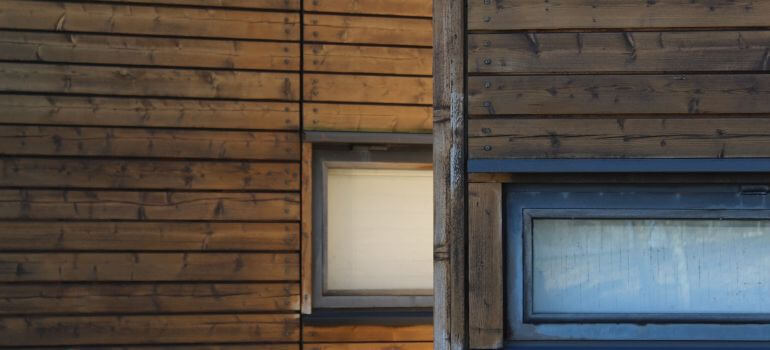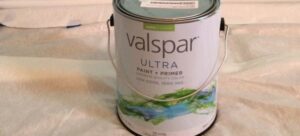Introduction
Choosing the right stain for your woodworking project is crucial for achieving the desired look and durability. Two popular options in the market are gel stain and poly stain. Let’s dive into the nuances of these stains and explore which might be the better fit for your next project.
Differences in Composition
Gel Stain Composition
Gel stain is a thick, viscous substance that contains both pigment and urethane. The gel consistency allows for better control during application, reducing the likelihood of drips and runs.
Poly Stain Composition
Poly stain, on the other hand, combines traditional wood stain with polyurethane, offering a two-in-one solution for coloring and protecting wood surfaces. The polyurethane component provides a protective layer against wear and tear.
Application Process
Applying Gel Stain
Gel stain is best applied with a cloth or brush, allowing for even distribution. Its thick nature makes it suitable for vertical surfaces, and it can be wiped off to achieve the desired intensity.
Applying Poly Stain
Poly stain, being a combination of stain and polyurethane, is typically applied with a brush. The application process is similar to traditional stain, and multiple coats may be needed for a richer finish.
Appearance and Finish
Gel Stain Result
Gel stain tends to sit on the surface of the wood, creating a more pronounced and highlighted grain pattern. It is an excellent choice for emphasizing the natural beauty of the wood.
Poly Stain Result
Poly stain penetrates the wood more deeply, providing a more subtle finish. The polyurethane component adds a protective layer, enhancing the wood’s durability and longevity.
Durability
When it comes to choosing a stain for your woodworking project, durability is a critical factor. Both gel stain and poly stain offer protective qualities, but their approaches differ.
Gel Stain Durability

Gel stain provides a commendable level of protection for wood surfaces. Its thicker consistency allows it to sit on the surface, forming a protective layer against scratches and minor impacts. While it may not penetrate as deeply as poly stain, gel stain is still an excellent choice for indoor projects with lower exposure to wear and tear.
Poly Stain Durability
Poly stain takes durability a step further by combining traditional stain with polyurethane. The polyurethane component creates a robust shield against the elements, making poly stain particularly suitable for outdoor projects and high-traffic areas. It not only enhances the wood’s longevity but also guards against moisture, ensuring the stain maintains its integrity over time.
Factors Influencing Durability
Several factors influence the durability of both gel stain and poly stain:
- Exposure to Elements: If your project will be exposed to the elements, such as rain and sunlight, poly stain’s added protective layer becomes especially valuable.
- Type of Wood: The type of wood you’re working with can impact how well the stain adheres and provides protection. Some woods may benefit more from the deeper penetration of poly stain.
- Application Process: The number of coats and the thoroughness of the application can influence the durability of the stain. Follow the manufacturer’s guidelines for the best results.
- Maintenance: Regular maintenance, such as cleaning and reapplication if necessary, contributes to the long-term durability of the stain.
Making the Durability Decision
Consider the following when making a decision based on durability:
- Indoor vs. Outdoor Projects: For indoor projects with lower exposure to the elements, gel stain may suffice. However, for outdoor or high-traffic areas, poly stain’s enhanced durability is a valuable asset.
- Long-Term Goals: If you’re aiming for a long-lasting finish with minimal maintenance, poly stain is the superior choice.
- Project Specifics: Assess the specific requirements of your project. If you prioritize a particular aesthetic, consider how the stain’s durability complements that vision.
In conclusion, both gel stain and poly stain offer durability, but the extent of that durability depends on various factors. Understanding the unique qualities of each stain will empower you to make an informed decision based on the demands of your woodworking project.
Versatility
Gel stain is versatile and can be used on a variety of surfaces, including fiberglass and metal. Poly stain is more tailored for wood surfaces and may not be as versatile for different materials.
Ease of Use
Gel stain is generally easier to use for beginners due to its thicker consistency and forgiving application process. Poly stain may require a bit more precision during application.
Cost Considerations
When it comes to choosing between gel stain and poly stain for your woodworking project, cost is a significant factor that can influence your decision. Let’s explore the cost considerations associated with these two popular staining options.
Gel Stain Cost
Gel stain is generally more budget-friendly than poly stain. The cost-effectiveness of gel stain makes it an attractive choice, especially for DIY enthusiasts and projects with tight budget constraints. This affordability extends to both the stain itself and the tools required for application, such as brushes or cloths.
Poly Stain Cost
Poly stain, being a combination of traditional wood stain and polyurethane, tends to be a bit pricier than gel stain. The additional cost is justified by the dual functionality of coloring and providing a protective layer. While poly stain may incur a higher upfront cost, it can potentially save money in the long run due to its enhanced durability, reducing the need for frequent reapplication.
Factors Influencing Cost
Several factors contribute to the overall cost of using gel stain or poly stain:
- Project Size: The size of your woodworking project will directly impact the amount of stain needed. Larger projects may require more stain, affecting the overall cost.
- Wood Type: The type of wood you’re working with can influence how much stain is absorbed, affecting the coverage and, subsequently, the cost.
- Brand and Quality: Different brands offer stains at various price points, and the quality of the stain can vary. Opting for a reputable brand may come with a higher cost but ensures a reliable product.
- Additional Tools: Consider the cost of additional tools needed for the application process, such as brushes, cloths, or sandpaper. Gel stain’s forgiving application may require fewer tools compared to poly stain.
Making a Cost-Effective Choice
To make a cost-effective decision between gel stain and poly stain:
- Evaluate Project Size: Assess the size of your project and estimate the amount of stain required for adequate coverage.
- Consider Long-Term Costs: While gel stain may be more affordable initially, factor in the potential need for more frequent reapplication. Poly stain’s durability may result in fewer maintenance costs over time.
- Explore Different Brands: Compare prices and read reviews to find a balance between cost and quality. Some brands offer budget-friendly options without compromising on performance.
In conclusion, understanding the cost considerations associated with gel stain and poly stain is crucial for making an informed decision. Whether you prioritize initial affordability or long-term durability, weighing these factors will guide you in selecting the stain that aligns with both your budget and project requirements.
Environmental Impact
In the ever-growing concern for sustainable choices, understanding the environmental impact of gel stain versus poly stain is crucial. Let’s explore how these popular wood stains differ in terms of their eco-friendliness.
Gel Stain and the Environment
Gel stain often takes a more eco-friendly approach compared to poly stain. Here’s why:
- Low VOC Content: Gel stains typically have a lower Volatile Organic Compounds (VOC) content. VOCs are harmful chemicals that can be released into the air during and after application. Choosing a low VOC gel stain contributes to better indoor air quality and reduces environmental pollution.
- Water-Based Options: Many gel stains offer water-based formulations, further minimizing the use of harsh solvents. Water-based stains are generally considered more environmentally friendly than oil-based alternatives.
- Less Waste During Application: The thick consistency of gel stain minimizes drips and runs during application, reducing the likelihood of waste. This not only benefits your project but also aligns with eco-conscious practices.
Poly Stain and the Environment
Poly stain, while effective in providing durability, may have a more notable environmental impact:
- Higher VOC Content: Poly stains, especially oil-based varieties, may have a higher VOC content than gel stains. This can contribute to air pollution and potentially affect indoor air quality.
- Chemical Composition: The combination of traditional wood stain and polyurethane in poly stain can involve the use of additional chemicals. While these chemicals enhance durability, they may have a more significant environmental footprint.
- Proper Disposal Considerations: The disposal of poly stain containers and leftover product requires careful consideration. Some poly stains may contain substances that are not easily biodegradable, posing challenges for environmentally friendly disposal.
Making an Eco-Friendly Choice
Consider the following factors when making an eco-friendly choice between gel stain and poly stain:
- Check VOC Levels: Look for gel stains with low VOC levels or water-based formulations. These options are generally better for the environment and your health.
- Explore Eco-Friendly Brands: Some brands prioritize eco-friendly practices in their manufacturing processes. Research and choose stains from companies committed to sustainability.
- Dispose Responsibly: Follow proper disposal guidelines for stain containers and leftover product. Some stains may require special disposal methods, so be sure to check with local regulations.
- Consider Long-Term Impact: While gel stain may have a lower immediate impact, the durability of poly stain may mean fewer reapplications over time, potentially reducing overall environmental impact.
In conclusion, both gel stain and poly stain have environmental considerations. By understanding the eco-friendly aspects of each option, you can make a conscious decision that aligns with your values and contributes to a more sustainable approach to woodworking projects.
Choosing the Right Stain for Your Project
Consider the nature of your project, the type of wood you’re working with, and the desired outcome when choosing between gel stain and poly stain. Each has its unique characteristics that can enhance different aspects of your woodworking project.
Tips for Successful Staining
- Prepare the Surface: Ensure that the wood surface is clean and free of any existing finish.
- Test on Scrap Wood: Before applying the stain to your project, test it on a scrap piece of the same wood to gauge the color and absorption.
- Even Application: Whether using gel stain or poly stain, aim for an even and consistent application for a professional finish.
Common Misconceptions
- Darker Stain Means More Protection: The intensity of the stain does not necessarily correlate with its protective properties. Always follow the manufacturer’s guidelines for durability.
DIY Projects Using Gel Stain
- Reviving Old Furniture: Gel stain is excellent for rejuvenating old furniture pieces with intricate details.
- Creating Faux Wood Finishes: Achieve the look of real wood on surfaces like fiberglass or metal with gel stain.
DIY Projects Using Poly Stain
- Outdoor Wood Projects: Poly stain’s added durability makes it a great choice for outdoor wood projects like decks and fences.
- High-Traffic Areas: Use poly stain in high-traffic areas where additional protection against wear is needed.
Conclusion
In the eternal debate of gel stain vs. poly stain, there is no one-size-fits-all answer. Each has its strengths and weaknesses, and the choice ultimately depends on your project’s specific requirements and your personal preferences. Whether you opt for the bold highlights of gel stain or the subtle protection of poly stain, a well-informed decision will lead to a stunning finished project.
FAQs
While gel stain can be used outdoors, it may not provide the same level of durability as poly stain. Consider the specific needs of your outdoor project.
The number of coats depends on the desired finish and the type of wood. Follow the manufacturer’s recommendations for the best results.
Gel stain is versatile and can be used on most wood types. However, it’s always advisable to test on a small, inconspicuous area first.
Yes, gel stains can often be mixed to create custom colors. Experiment on a small sample to achieve the desired hue.
Absolutely! Poly stain is a great choice for indoor furniture, providing both color and protection in one application.



